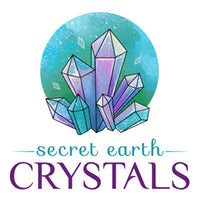SEPTARIAN
Specifications
Mineral Class: Carbonate
Crystal System: Trigonal
Hardness: 3
Luster: Dull
Diaphaneity: Opaque
Colors: Yellow, Brown, Tan, Gray
Symbolizes: Completion
Source: Australia, England, Madagascar, New Zealand, Spain, and USA


Septarian gets its name from the Latin for Septem or seven, because the mud ball from which it forms on the seafloor splits into seven points radiating in every direction. Seven is also the universal number for completion. These Septarian nodules formed between 50 to 70 million years ago. Septarian is a combination of Calcite, Limestone, and Aragonite; these concretions form into boulders often very large in size. The yellow parts that you see are the Calcite and the brown lines are Aragonite. The white lines are Baryte and the grey ones are either Chalcedony, limestone, or petrified mud. Septarian is also known as Septaria, Septeyre and Dragon Stone. There are many deposits of Septarian found in the USA, Canada, New Zealand, Australia, Madagascar, Spain and England.
